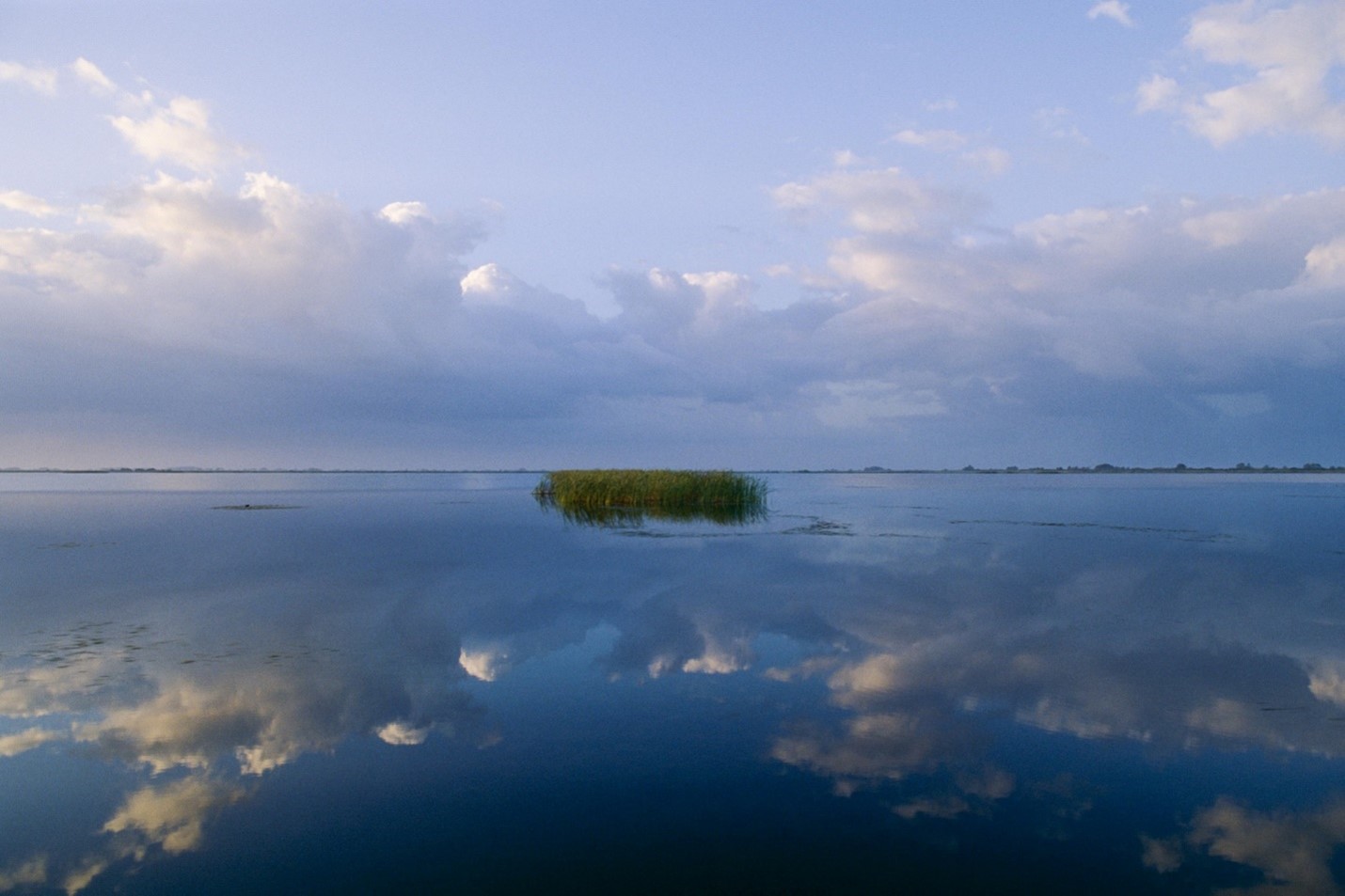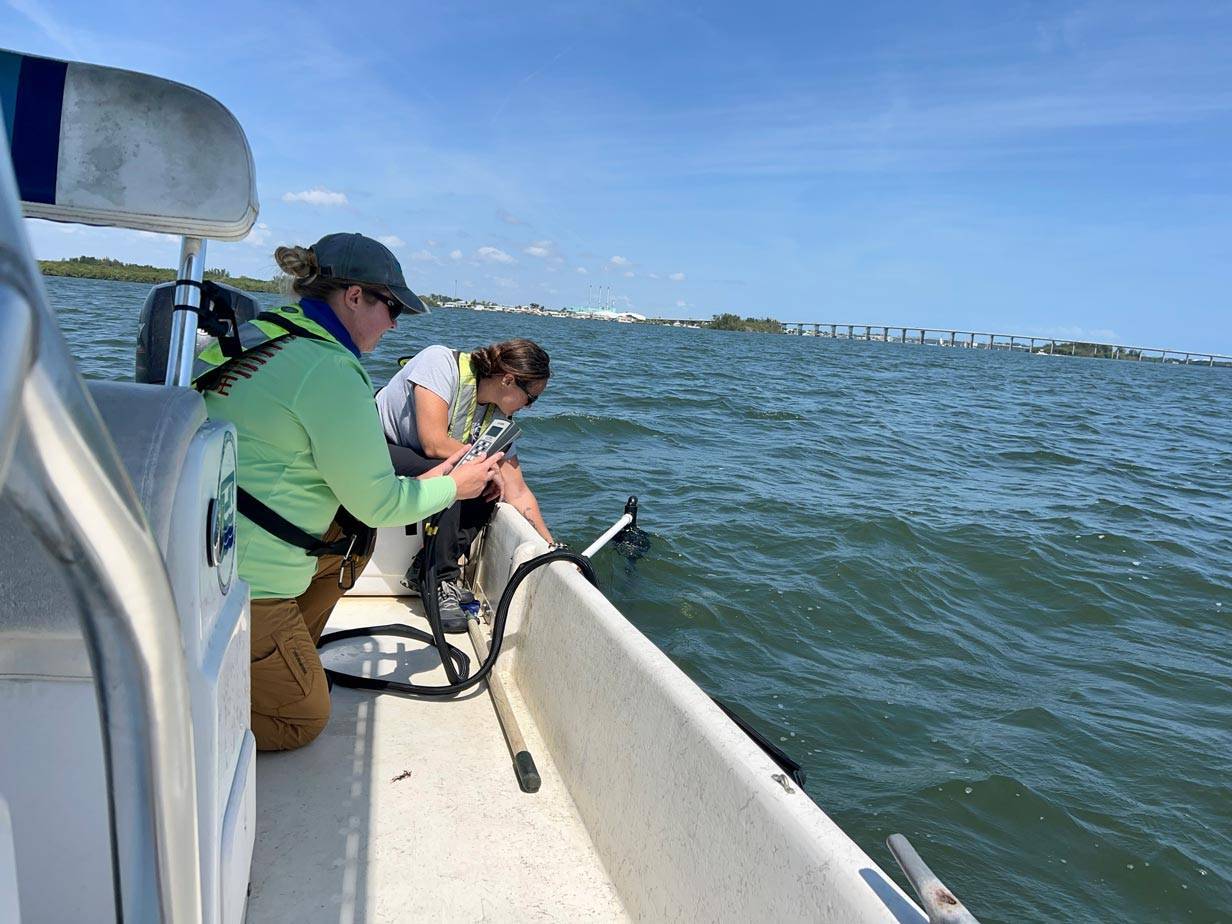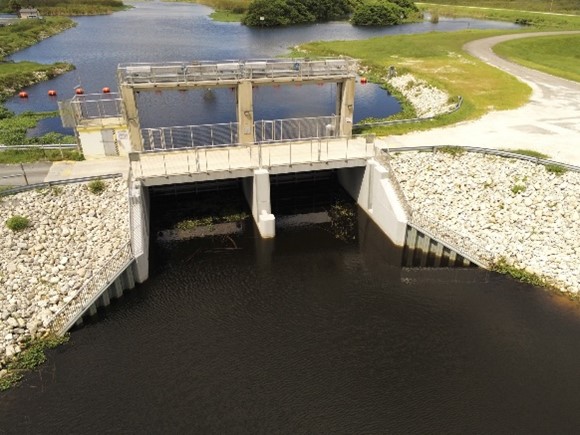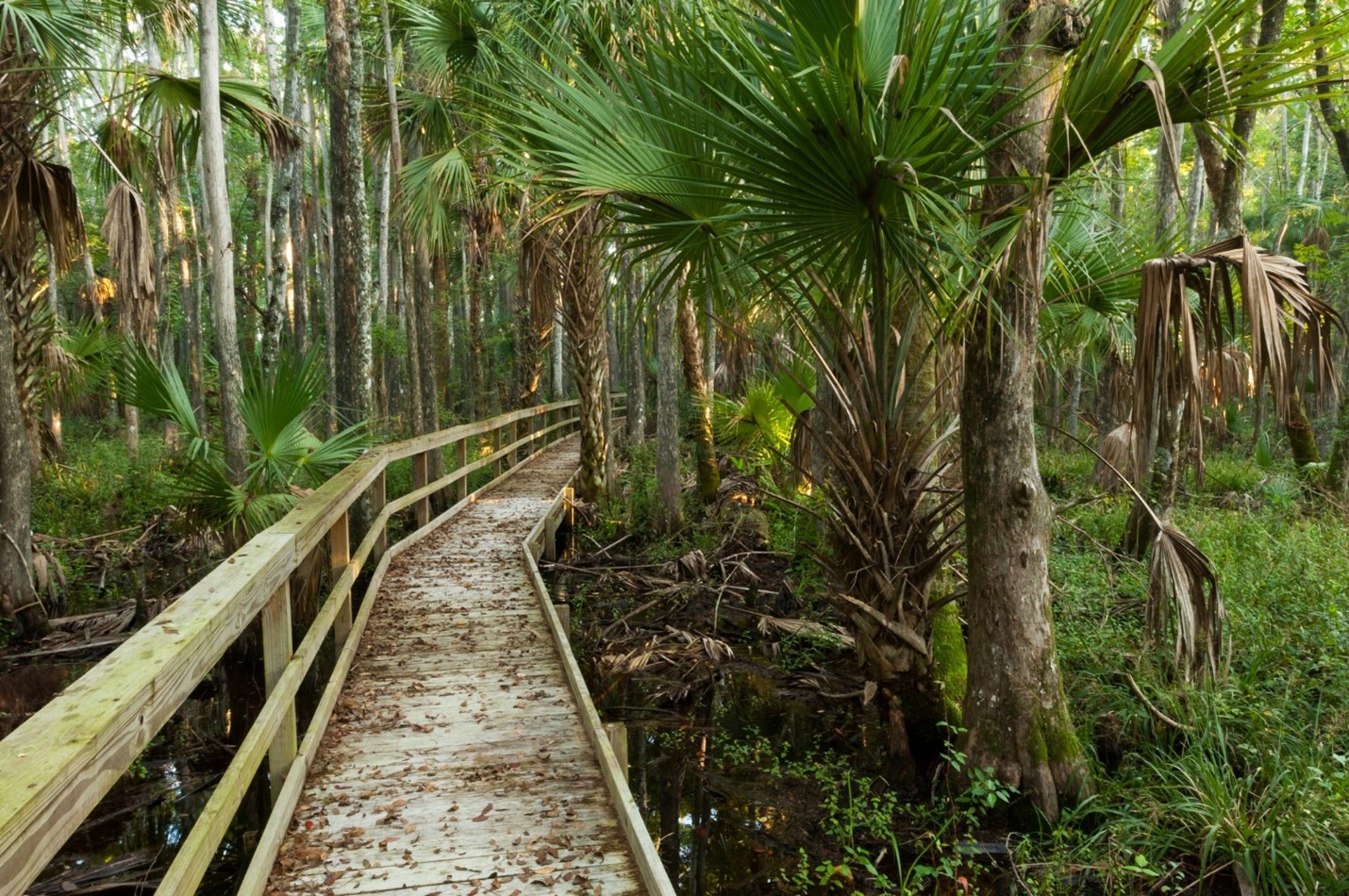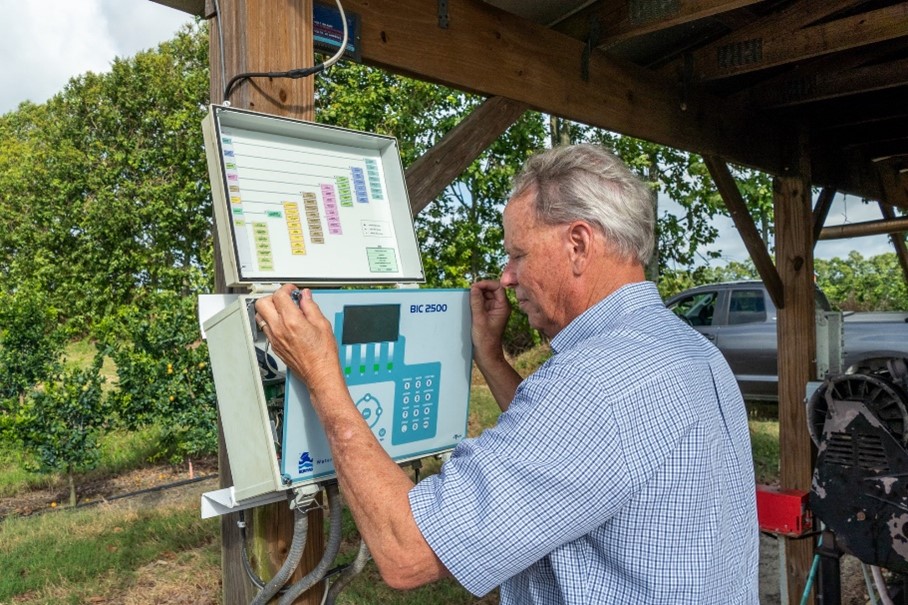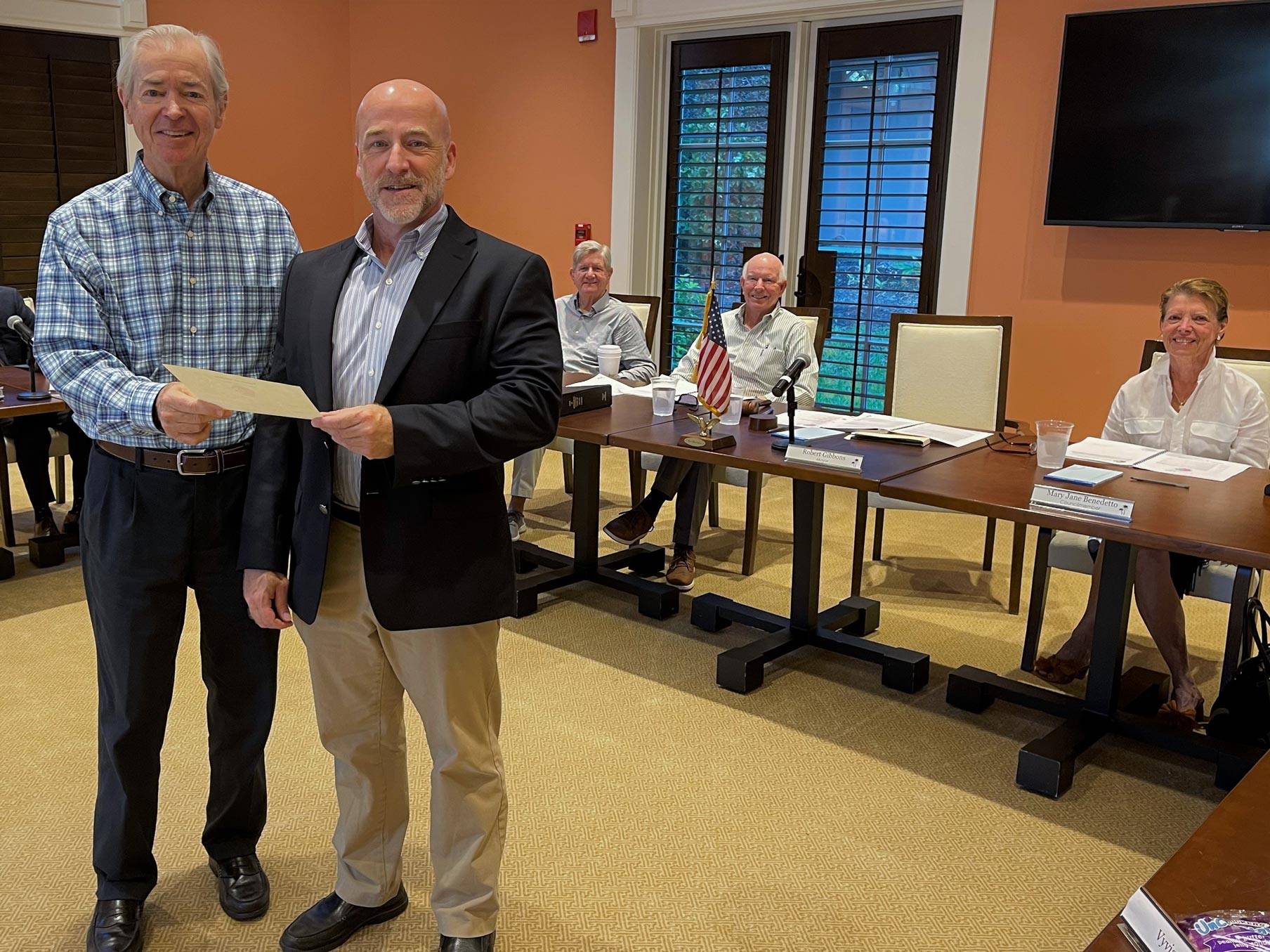Here’s what we’re doing in Indian River County
The work of the St. Johns River Water Management District is all about water. Our staff work each day on your behalf to protect water. This work is focused on four core missions: water supply, water quality, flood protection and natural systems enhancement and protection.
Indian River is just one of the 18 counties where we do our work. Following is an overview of some of the ways that your tax dollars benefit not only the residents and visitors to the county, but also its natural and water resources.
Have you seen construction projects in your community or wonder where your water comes from? Chances are, the District issued a permit through its regulatory programs. The Consumptive Use Permitting Program reviews requests for water use and determines the amount of water available to be withdrawn from groundwater or surface water for uses such as public supply utilities, agricultural operations, commercial uses and power generation. Environmental Resource Permits authorize new construction in a way to prevent harm to water resources (such as causing adverse flooding), manage surface water and protect water quality, wetlands and other surface waters.
- Visit the interactive map dashboard to see what District permits have been issued in your county. Search by county, city or street address.
- Map-based GIS permit search tool (within the ePermit portal)
- Click here to search our ePemit portal for permits or applications.
- Overview of our permitting program.
Water supply planning and our regulatory and water conservation programs are examples of how we apply our water supply core mission each day.
- In Indian River County, you are included in the Central Springs/East Coast Regional Water Supply Plan which identifies water supply challenges and water resource development projects to meet current and anticipated demands for water.
- Watering restrictions help save water. Know your watering day.
- Florida Water Star program – Overview of building water efficiency into your home or business
- See map of “green homes” in Indian River County
Strategies to protect and restore water quality include a commitment to comprehensive monitoring to guide impairment determinations, manage restoration projects and evaluate effectiveness.
- What’s happening with the water in my area right now? See our continuous water quality monitoring portal.
- Surface water quality, searchable map of status and trends.
- Groundwater quality, searchable map of status and trends.
- Springs water quality, searchable map of status and trends.
Flood protection comes in many forms, such as water storage in natural wetlands and your neighborhood stormwater pond or flood control structures built in strategic locations.
- Water control structures:
- Flooding in hurricanes or tropical storms. Here’s a list of local government contacts, state agencies and helpful website links for before, during or after a storm.
- Map of flood control areas in Indian River County.
- Location of controlled water levels in your county.
- Upper St. Johns River Basin project area data.
Natural systems benefit from lands the District has purchased for conservation and restoration. These lands are open for free for your enjoyment. On lands not owned by the District, natural systems benefit from effective permitting, water quality improvement projects, minimum flows and levels and cost-share projects.
- The District owns or manages the following public lands in your county:
Prescribed fire helps maintain fire-dependent public lands.
Public lands help protect Florida’s endangered plants and animals.
Minimum flows and levels balance people’s and nature’s needs. MFLs in your county are:
- Blue Cypress Lake
Learn more about MFLs.
The District constructs large, regional projects that often benefit multiple counties and benefit more than one of the District’s core missions. Some of the projects in your county include:
- Upper St. Johns River Basin Project — The District and the U.S. Army Corps of Engineers (USACE) embarked on an ambitious, long-term flood control project in 1977 to revitalize the upper basin. Extending from the headwaters of the St. Johns River in Indian River and Brevard counties to the confluence of the St. Johns and Econlockhatchee rivers in Seminole County, the project reclaimed drained marshlands by creating reservoirs and replumbing canals that had been diked and drained in the early 1900s for agriculture. The goals of this award-winning project are numerous: to improve water quality, reduce freshwater discharges to the Indian River Lagoon, provide for water supply, and restore or enhance wetland habitat. The project is now in long-term maintenance.
- Fellsmere Water Management Area — The District restored 10,000 acres of wetlands and open water at the headwaters of the St. Johns River. Formerly pasture and crop lands, the property has been transformed into wetlands that will become the primary source of irrigation water supply for the remaining agricultural lands owned by Sun-Ag Inc. Benefits include restoring agricultural land to wetlands, reducing the annual amount of phosphorus and chloride flowing to the upper St. Johns River, providing a mosaic of wetland types that will provide habitat for a large number of species, decreasing the frequency of freshwater discharges through the C-54 canal to the Indian River Lagoon to less than a 1-in-100-year storm event; conserving groundwater that is withdrawn from the Floridan aquifer; augmenting dry season flows to the St. Johns River, enhancing downstream aquatic environments; and increasing water storage in the Blue Cypress Lake watershed.
- Sebastian River Improvement District Treatment and Storage — This is a water quality project to benefit the Sebastian River and the Indian River Lagoon, with secondary benefits of alternative water supply and flood mitigation. The project will involve modify existing gates with modified weirs and divert flow to a reservoir or stormwater treatment area.
The District collects a wealth of data that is used to make science-based decisions in all our work. This includes data on how much rain your county has received, the water levels in area lakes and rivers, the amount of nutrients in natural waterways, planning to address future water supply needs and much more.
- Has your area received rain? See the rainfall dashboard.
- Surface water levels.
- Hydrologic data, interactive map.
The Blue School Grant Program provides funding to teachers within the District in support of their efforts to engage students in understanding and appreciating Florida’s freshwater and estuarine systems.
Encourage your child’s teacher to apply for a grant.
Contact us about a speaker for your group. We’d love the opportunity to speak with you about our work. Speaker’s bureau.
Free materials you can read or download at home or school.
Staff in our Governmental Affairs Program provide water resource information, assistance and support to federal, state and local elected officials and their staffs, and collaborate on water resource issues, programs and projects. One of the ways you may have met team members is during the annual Water Conservation Month observance when your local governments approved proclamations recognizing the observance.


